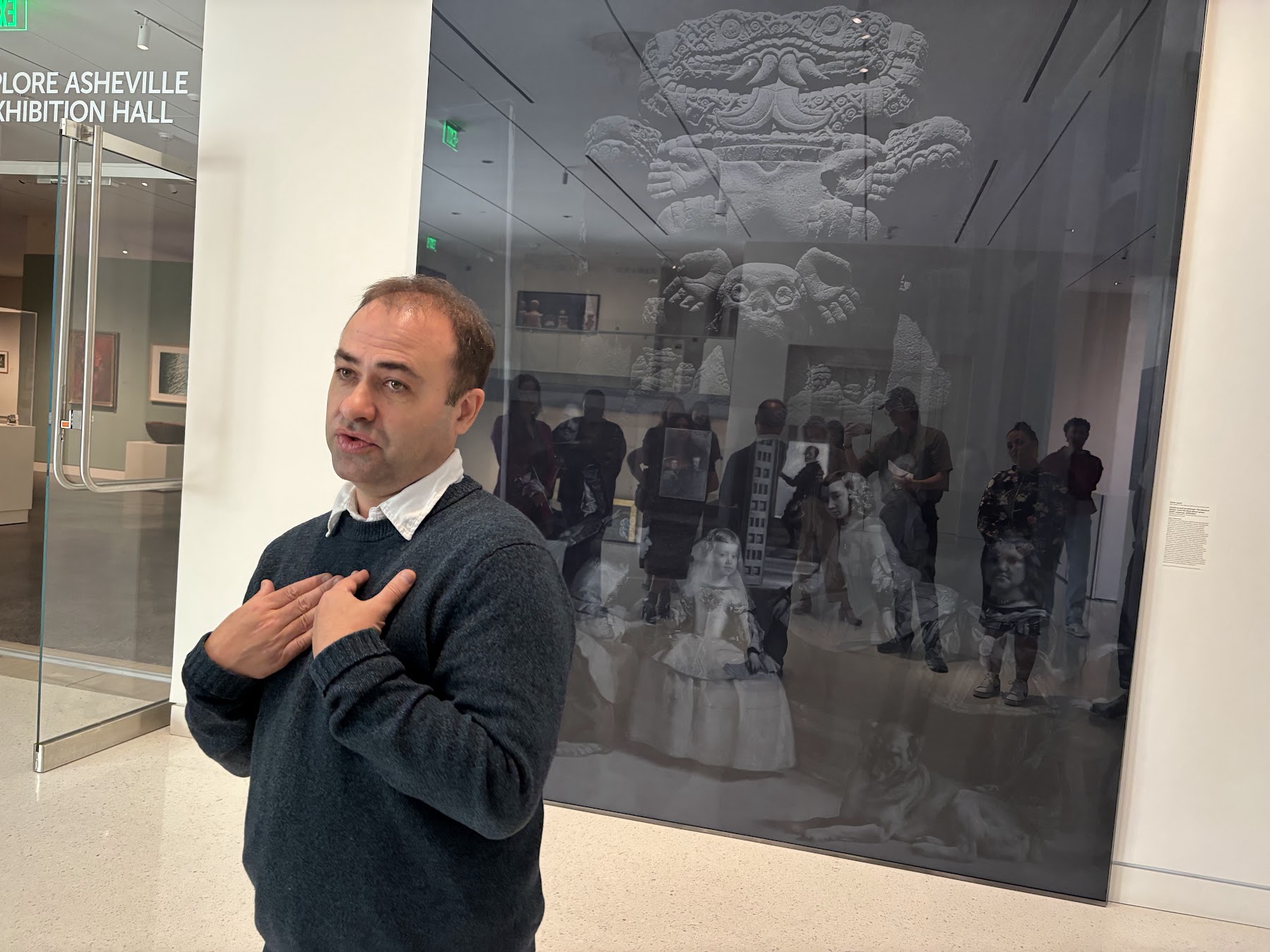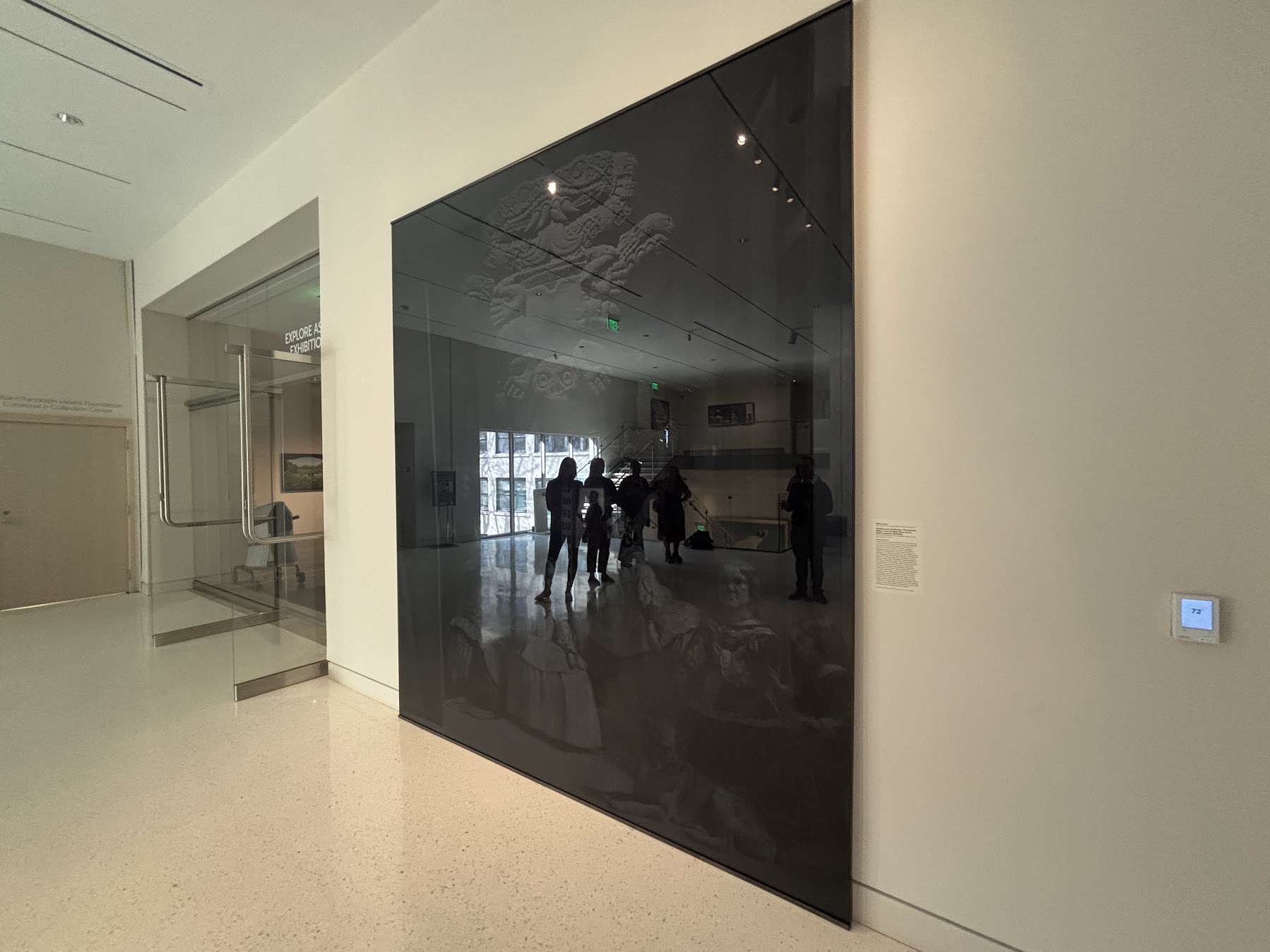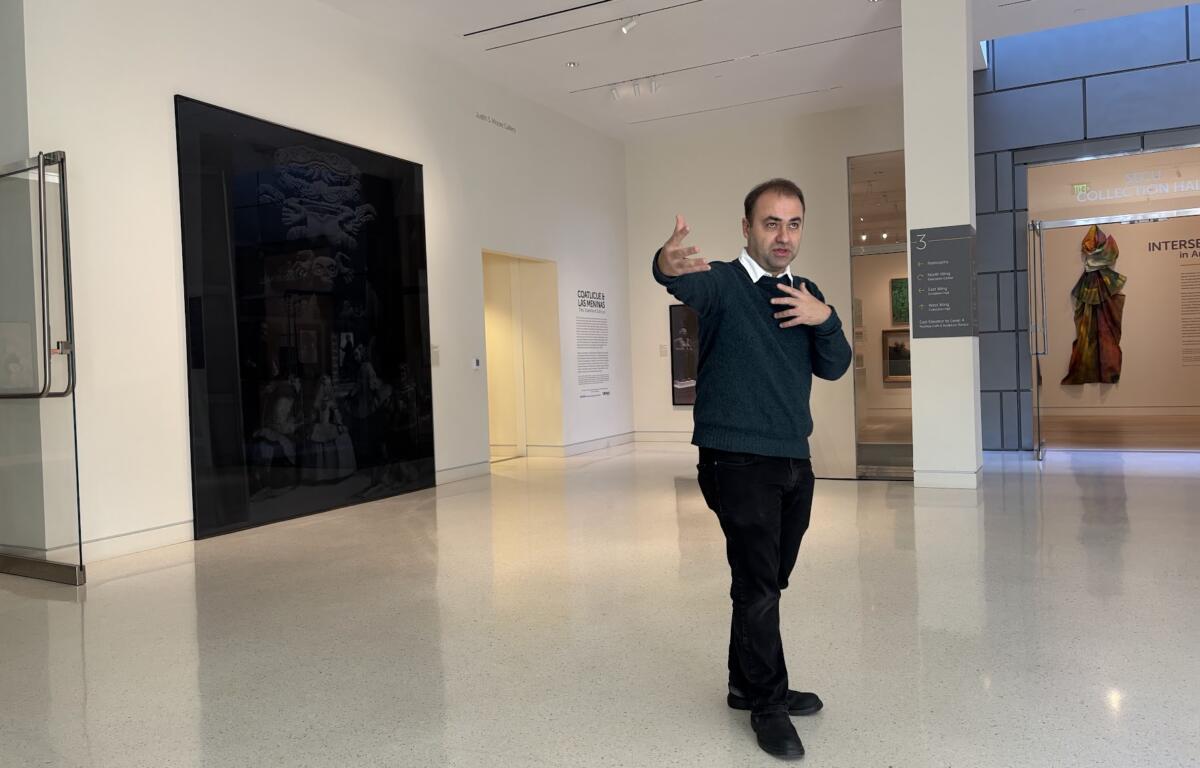ASHEVILLE, N.C. (828newsNOW) — The newest exhibition at Asheville Art Museum, “Coatlicue & Las Meninas: The Stanford Edition,” features several pieces from artist and professor Pedro Lasch’s “Black Mirror/Espejo Negro” series.
The centerpiece of the collection is a ten-foot-tall darkened pane of reflective glass with two black-and-white images of classic artwork superimposed inside. Spanish artist Diego Velázquez’s famed 1656 painting, “Las Meninas,” is combined in “Coatlicue & Las Meninas” with a 600-year-old statue of the Aztec deity Coatlicue. When viewers come close to the glass, they will see themselves reflected among the two works of art.

“If you come closer, it is lit intentionally, so that as we walk into the painting, we see ourselves just like the ‘Meninas.’ If you look at Velázquez, it’s a brilliant thing,” Lasch said. “It’s such a complex painting. According to many philosophers, it really marks the beginning of modernism. Basically, modernity starts there as a world view.”
Lasch intended “Coatlicue & La Meninas” to explore the relationship between modern art and colonialism.
“It has a lot to do with coloniality in my view, too. This is the golden era of Spanish culture. None of it would have been possible, just like American wealth and culture would not be possible without slavery and how we have to deal with that, it’s the same with Spanish civilization,” Lasch explained. “Without the extreme exploitation and violence of the American continent, none of this would have ever happened. There would be no Velázquez, and “Las Meninas” is accompanied for that very reason with this goddess.”
Lasch wants the viewer’s reflection to remind them how their identities and perspectives shape their perception of the work.

“Not just the coexistence but the inseparability of us in the current time, whoever we are, whoever we identify as being part of this construction,” Lasch clarified. “The construction in the glass is the pre-Columbian, the ancient with a more contemporary Spanish worldview. It’s separate. But we have to add our own presence to that.”
“Coatlicue & Las Meninas: The Stanford Edition” will run from April 16 to July 13, 2025 at the Asheville Art Museum.
More information about the exhibit and its original commission as part of “What Can Become of Us?,” a series produced by the Stanford Institute for Advancing Just Societies and Zócalo Public Square, can be found here.


